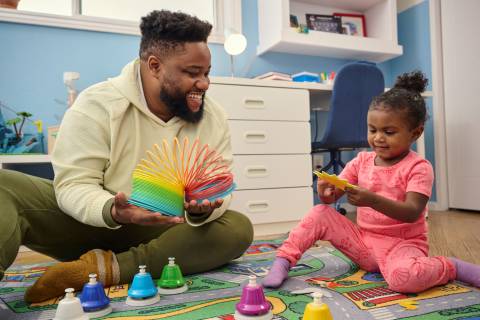When raising a child together, it’s helpful for co-caregivers to have open and honest conversations about discipline styles and how they'll consistently handle their child's behavior.

Discipline refers to the support caregivers provide that helps their children navigate the world with confidence and success. It helps children develop self-control and make appropriate choices. Effective discipline focuses on teaching and guiding children so that they understand why certain behaviors are acceptable in different settings. Common discipline styles include the following:
Boundary-based discipline involves setting clear expectations and consequences for children. It focuses on teaching children responsibility and helps them understand the impact of their actions.
Behavior modification focuses on encouraging positive behaviors by using rewards. Appropriate consequences discourage unwanted behavior.
Positive discipline encourages children to develop empathy, self-awareness, problem-solving skills, and self-discipline. Open communication, understanding, and mutual respect are the keys to this discipline style.
Gentle discipline prioritizes empathetic responses and developing emotional connections between the caregiver and child. Caregivers address misbehavior through peaceful strategies.
Emotion coaching helps children understand and manage their emotions. Caregivers acknowledge children’s feelings and help them develop more appropriate responses to big feelings.
Discussing discipline styles with your co-caregiver can be challenging. But open communication is essential for creating a consistent, nurturing environment for your child. Here are some tips for starting the conversation and handling disagreements:
Choose the right time: Schedule a time for this conversation when both caregivers can focus without distractions.
Set a positive tone: Begin the conversation by emphasizing that you have shared goals and good intentions. Even if the conversation gets difficult, you can come back to this moment and remind yourselves that you both are coming from a place of love for your child.
Example: “We both want what's best for our child, so let's talk about how we can work together to create a consistent discipline approach that feels right for both of us.”
Active listening: Give each other the opportunity to express thoughts, concerns, and beliefs without interrupting. Use body language like nodding and eye contact to show understanding and interest.
Avoid accusations: Use “I” statements to talk about feelings and thoughts instead of blaming the other person. This can help both caregivers avoid feeling attacked.
Example: “I feel concerned about this discipline method because I think it may be too harsh. Can we explore some alternatives together?”
Seek common ground: Identify areas where both caregivers agree. You can build a discipline approach by starting with your shared values.
Stay solution-focused: If disagreements arise, try to find potential compromises or alternative methods that could work for both caregivers.
Example: “It seems we have different views on time-outs. Could we experiment with a few other strategies, like offering a calm-down space or using positive reinforcement, to see which works best for our child?”
Keep bringing yourselves back to the key goal: Remind yourselves that the ultimate goal of this conversation is to create a supportive and nurturing environment for your child.
Seek professional guidance if needed: If disagreements become too challenging, consider seeking help from a family therapist, counselor, or parenting expert. They have experience helping both caregivers feel heard and find common ground.
As your child gets older, their needs and methods of discipline will likely change. As co-caregivers, you’ll need to discuss new scenarios and align on strategies throughout your child’s life. At the end of the day, you’re both working toward the same goal: raising a happy, healthy, and thriving child.






